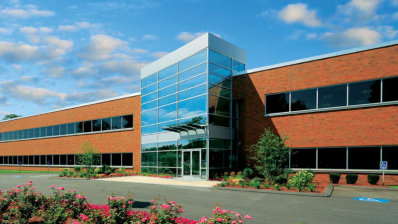It can take months, if not years, to fully understand the lasting impact of black swan events on financial markets. In the short-term, we often see rising unemployment, a decrease in valuations, and consumer spending. But in the long-run, investors who are able to invest during the trough of a market cycle may see large returns as the market recovers. Currently, the global economy is learning how to move forward under the shadow of the latest black swan event'“COVID-19.
As governments around the world implemented restrictive measures to combat the spread of the virus, economies came to a standstill. Broad stay-at-home orders, combined with consumer fears and rising unemployment, have created financial strains that are being felt by the commercial real estate industry and many commercial tenants have requested rent forbearance from landlords.
Properties with consumer and direct COVID-19 exposure were hit hardest:
- Hospitality: During the week of April 11 STR reported a national occupancy of 21%, a 69.8% year-over-year decline, and revenue per available room (RevPAR) reported an 83.6% year-over-year decline.
- Retail: Brokerage firm Marcus & Millichap stated that landlords with mostly non-essential stores only collected 10-25% of April rent, while landlords with some essential stores collected 50-60% of rent.
- Multifamily: According to the National Multifamily Housing Council, as of April 5th, one-third of tenants did not pay their April rent.
Because of these losses, it's likely that some commercial real estate properties will be unable to generate their usual monthly income, which means they may not be able to pay their own debt payments on time or in full. And while lenders may be able to provide relief to borrowers for 30 to 60 days, no one can say for sure what will happen at 90, 180, or 270 days as the pandemic drags on. After all, even as the economy 'opens up,' recovery is not instantaneous.
What does this mean for investors?
Just as black swan events bring distress into markets, they can also present opportunities for investors. Opportunistic investments were plentiful in the wake of the 2008 recession. Real Capital Analytics reported that valuations fell by 35% between August 2008 and June 2010, providing investors with an appetite for risk the opportunity to buy distressed properties at a steep discount.
As it was in the Great Recession, the current economic slowdown could ultimately lead to many loans becoming 'bad debt' as companies default on their debt. Current levels of distress could lead to a decline in new commercial real estate loan origination. That means sponsors are more likely to sell their properties in a fire sale to stop the bleeding, rather than restructure their debt since loans may not be readily available.
In fact, The Wall Street Journal is calling the current market environment a 'Potential Bonanza in Distressed Sales.'
Why consider an opportunistic investment now?
Sometimes referred to as 'Distressed Assets,' opportunistic deals generally focus on a property that needs significant work to reach its full potential market value. And while they are considered the riskiest of commercial real estate investments, with increased risk comes the increased potential upside. If past patterns of recession and recovery persist, the current market environment is likely to provide significant investment opportunities for investors that invest at the trough of the recession stage and sell at or near the peak of the recovery.
Get distressed assets at a significant discount.
'An opportunist buys things because they're offered at bargain prices,' says Oaktree Capital Management's Howard Marks in The Most Important Thing. If the market repeats 2008 pricing, many commercial real estate assets could decrease in value, creating an opportunity for sponsors (and their investors) to acquire those assets at attractive prices and with low interest rates.
Take advantage of our current position in the real estate cycle.
We're entering the recessionary phase of the real estate cycle. While we can't say for sure how long it will last, when the market eventually rebounds, sponsors could sell their assets for much more than they bought them for. It's the real estate equivalent of 'buy low, sell high.'
Whenever you're considering an opportunistic deal, it's important to take risk mitigation factors into consideration. Some of the risk can be offset by working with an experienced sponsor, investing in multiple projects to minimize asset concentration risk, and looking for markets with strong fundamentals. In the end, recovery will likely happen at different times in different markets, and different asset classes will also rebound and expand at different rates. As we saw with the Great Recession, investors who were willing to bear the risk and invest during the trough of the market cycle could reap the benefits of the recovery and expansion phases.


